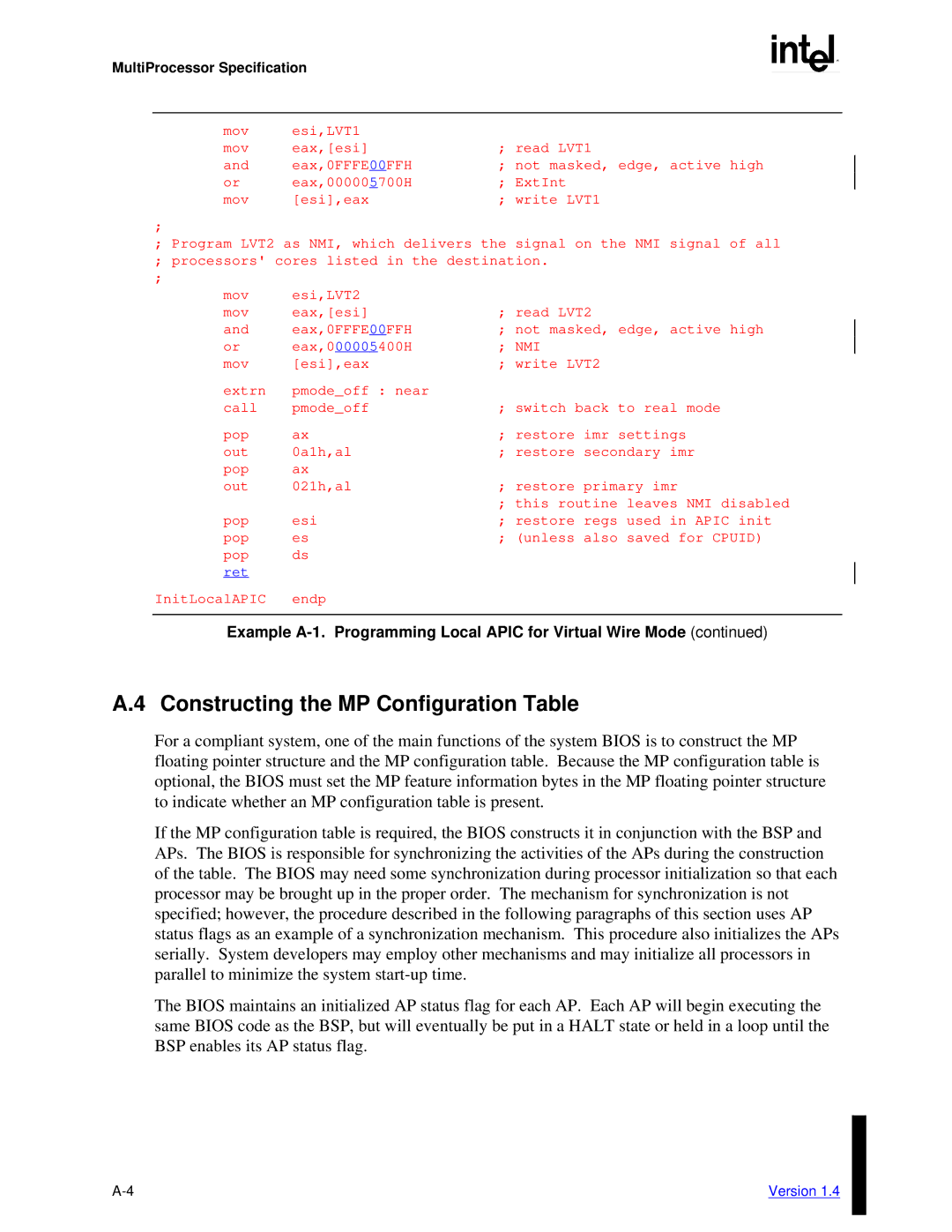
MultiProcessor Specification
mov | esi,LVT1 |
|
|
mov | eax,[esi] | ; read LVT1 | |
and | eax,0FFFE00FFH | ; not masked, edge, active high | |
or | eax,000005700H | ; | ExtInt |
mov | [esi],eax | ; | write LVT1 |
;
;Program LVT2 as NMI, which delivers the signal on the NMI signal of all
;processors' cores listed in the destination.
; |
|
|
mov | esi,LVT2 |
|
mov | eax,[esi] | ; read LVT2 |
and | eax,0FFFE00FFH | ; not masked, edge, active high |
or | eax,000005400H | ; NMI |
mov | [esi],eax | ; write LVT2 |
extrn | pmode_off : near |
|
call | pmode_off | ; switch back to real mode |
pop | ax | ; restore imr settings |
out | 0a1h,al | ; restore secondary imr |
pop | ax |
|
out | 021h,al | ; restore primary imr |
|
| ; this routine leaves NMI disabled |
pop | esi | ; restore regs used in APIC init |
pop | es | ; (unless also saved for CPUID) |
pop | ds |
|
ret |
|
|
InitLocalAPIC | endp |
|
|
|
|
Example A-1. Programming Local APIC for Virtual Wire Mode (continued)
A.4 Constructing the MP Configuration Table
For a compliant system, one of the main functions of the system BIOS is to construct the MP floating pointer structure and the MP configuration table. Because the MP configuration table is optional, the BIOS must set the MP feature information bytes in the MP floating pointer structure to indicate whether an MP configuration table is present.
If the MP configuration table is required, the BIOS constructs it in conjunction with the BSP and APs. The BIOS is responsible for synchronizing the activities of the APs during the construction of the table. The BIOS may need some synchronization during processor initialization so that each processor may be brought up in the proper order. The mechanism for synchronization is not specified; however, the procedure described in the following paragraphs of this section uses AP status flags as an example of a synchronization mechanism. This procedure also initializes the APs serially. System developers may employ other mechanisms and may initialize all processors in parallel to minimize the system
The BIOS maintains an initialized AP status flag for each AP. Each AP will begin executing the same BIOS code as the BSP, but will eventually be put in a HALT state or held in a loop until the BSP enables its AP status flag.
Version 1.4 |
